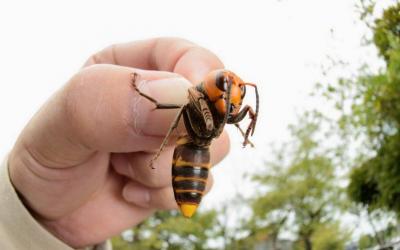Flinders University has conducted a new study that suggests the bee species may have survived all these years, but it still faces increasing pressures from habitat degradation and wildfires. Only six individuals of this species have been discovered, with the last documented sighting occurring in 1923.
Co-author of the study, James Dorey, expressed concern, stating, "This is troubling because it is the only Australian species in the genus Pharohylaeus, and nothing is known about its biological nature." Based on the lack of sightings of this unique bee in recent decades, bee experts Dr. Tobias Smith and Olivia Davis set out to determine whether the bee is extinct or not.
To verify this, the team sampled bees from 225 public sites and 25 targeted sites across New South Wales and Queensland. The study's results indicated that the highly fragmented habitat and specific host plants for this bee explain its rarity, which is known as Pharohylaeus lactiferous. Dorey noted, "Three populations of P. lactiferous were found by sampling bees that visit their preferred plant species along the Australian eastern coast, suggesting population isolation."
Additionally, the research team analyzed bee and vegetation records from the Australian Wildlife Atlas, which lists 500 bee species in New South Wales and 675 species in Queensland.
Experts warn that habitat loss and the degradation of Australia's rainforests, along with wildfires and climate change, are likely imposing extinction pressures on this species and other invertebrate species. The study's authors reported that Australia has already cleared over 40% of its forests since European colonization, leaving much of what remains fragmented and degraded. Dorey added, "My geographical analyses used to explore habitat destruction in tropical wetland biomes and the central Mackay coast indicate that Queensland’s rainforest and populations of P. lactiferous are exposed to wildfires, particularly in fragmented natural habitats." The researchers discovered that this bee species is more vulnerable due to its preference for specific plant samples that are not found in forested areas.




